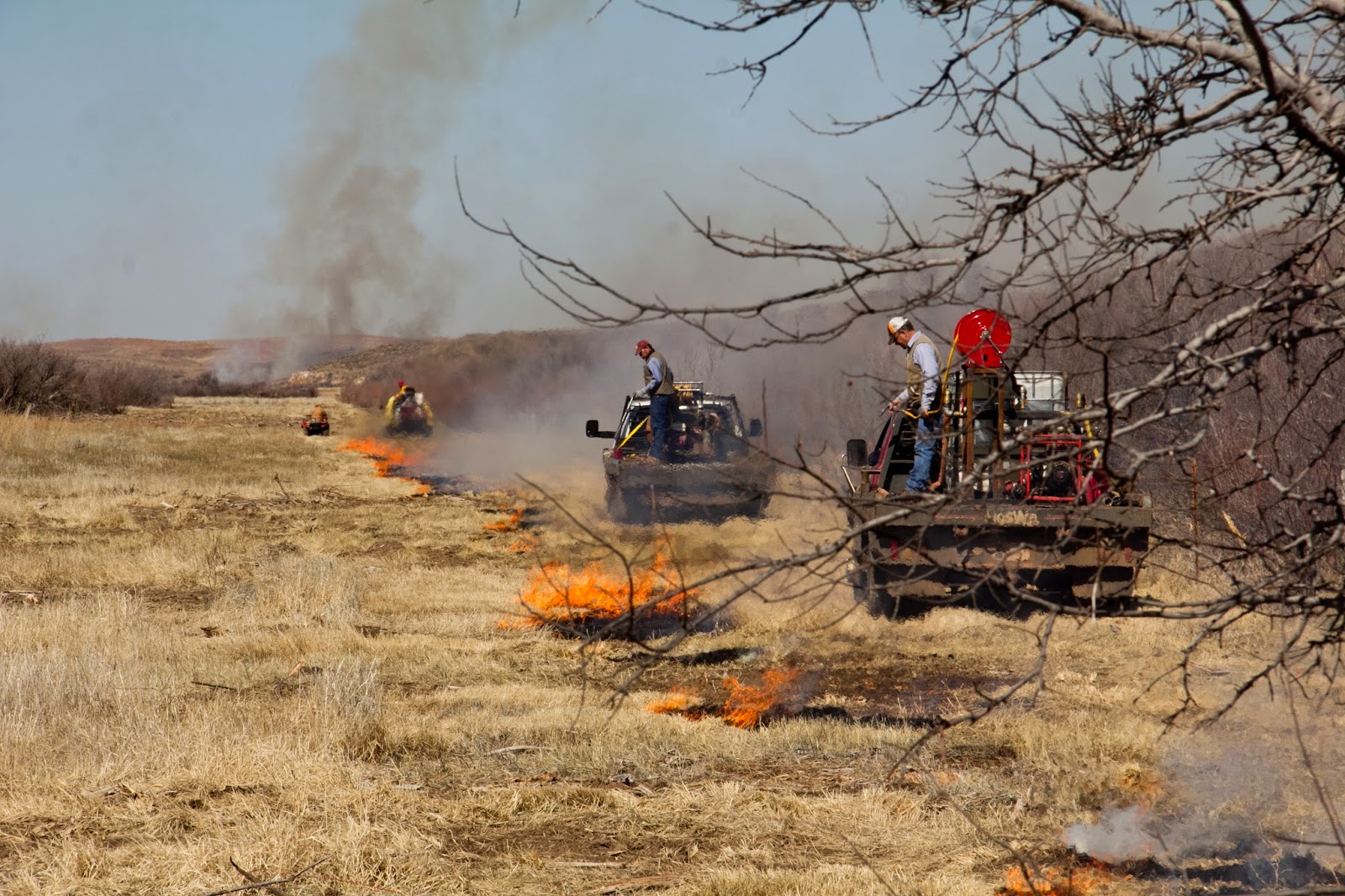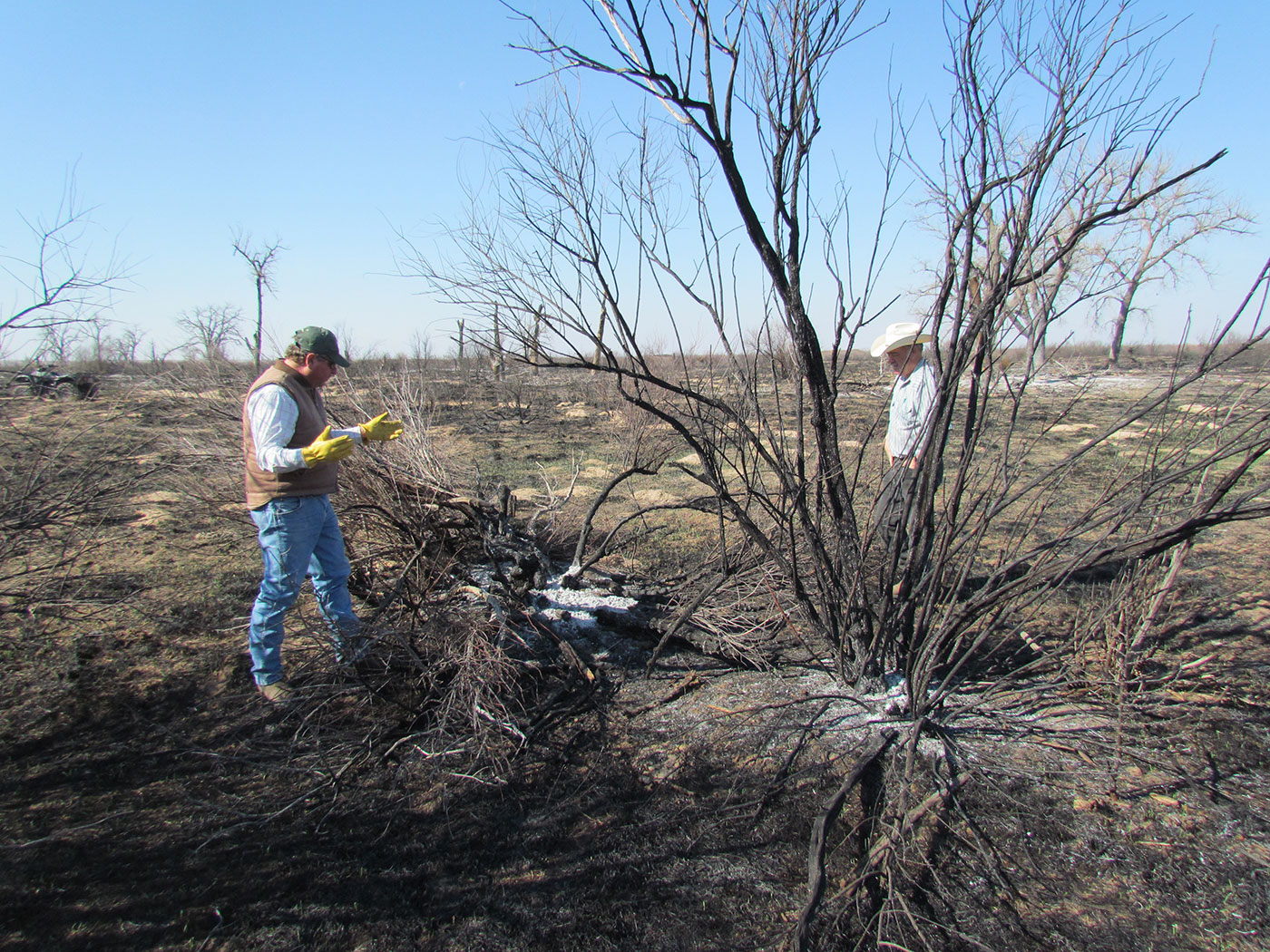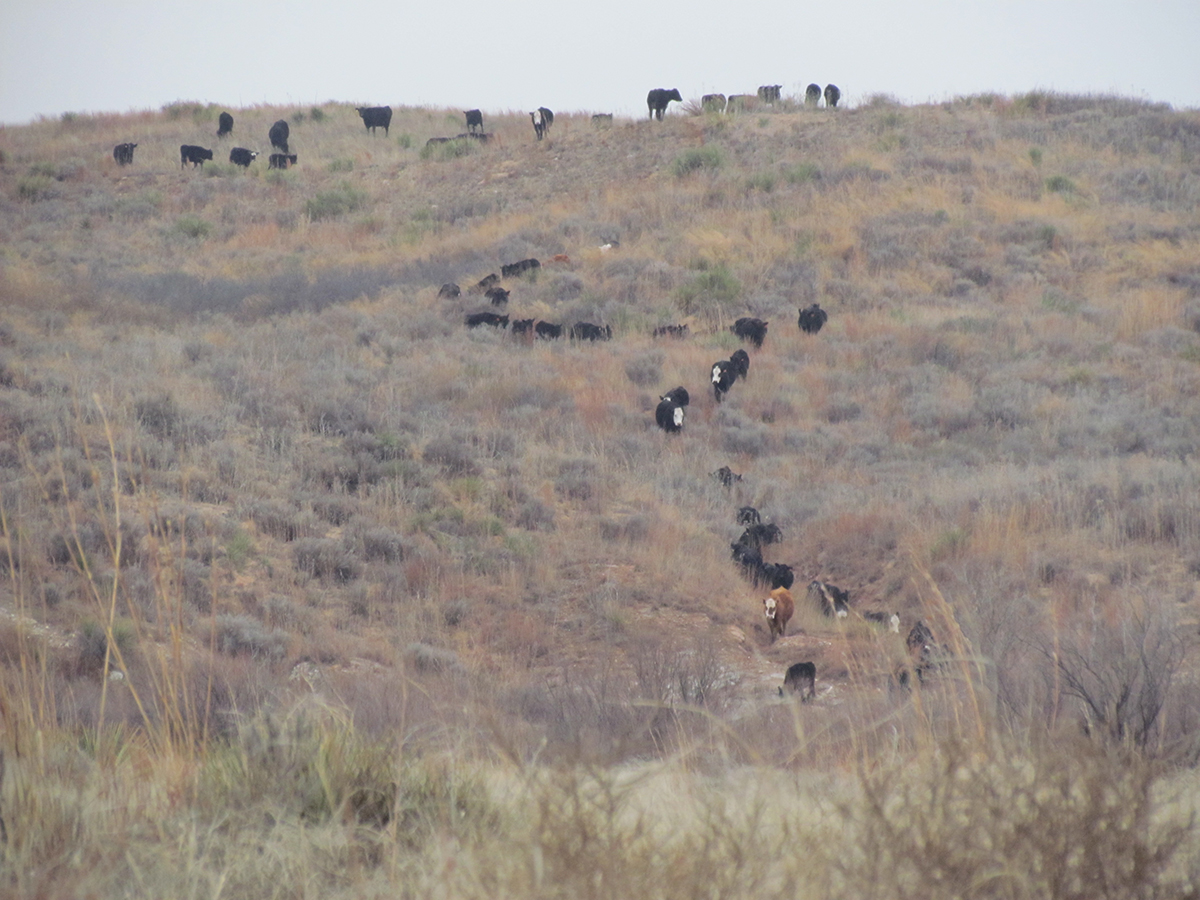| Type | CEC-support Ranch Pilot |
| Organization | BbarB Ranch |
| Country | USA |
| Region | Clark County, Kansas |
| Grass Type | Tall, mixed-grass and sand sagebrush prairie |
| # of head of cattle | 200 |
| Hectares | 1,503 |
| Language | English |
| Date modified | August 2016 |
The B bar B ranch is located in southwest Kansas within the Great Plains of North America. The property is primarily a working cattle operation with small-scale, premium deer hunting. The region also exhibits abundant northern bobwhite quail and other grassland birds. Beneficial practices carried out on this 1,416-acre project included establishing electric cross fencing, constructing firebreaks, prescribed grazing and conducting periodic prescribed burns.
Four pastures were divided into 12 paddocks through installation of 12,736 meters of high tensile electric fence. The system included wire, chargers, remote control, step-in posts, reels, diverter and solar supplies. The ranch is off the grid so all electricity is generated from solar energy to pump water and maintain fences. The cross fencing will increase rest periods by 50–75% for each pasture, resulting in more biomass production both above and below ground level. Increased biomass and herd impacts will add soil organic matter for soil health. Also, increased rest for the pastures will maintain suitable cover height for ground-nesting birds. The ranch has gained more grazing management to enhance forage utilization and build fuel as needed for prescribed burns. The plant community will be conserved by not grazing the same cell during the same season each year, allowing plants to complete their life cycles. A diverse native plant community mitigates soil moisture deficits and maintains higher stocking rates.
Bill Barby, an active member of the local prescribed burn association (PBA), installed firebreaks and conducted a 250-hectare prescribed burn in the spring of 2015 to control invasive trees, improve livestock forage, and restore wildlife habitat. The Great Plains grasslands are the product of the interaction among grazing, fire and climate. When fire is removed from the grasslands’ cycle, invasive trees begin to dominate and cause negative impacts. Invasive trees, especially eastern red cedar, significantly lower livestock forage production, grassland wildlife habitat, and water resources, while also increasing the risk of wildfires. Tamarisk leaf beetles were released to control salt cedar—a highly invasive non-native tree that overtakes riparian areas.
The ranch has hosted tours and workshops for local producers and associations as well as state, federal and international partners. The owner-operator is a conservation leader in the community, organizing the Cherokee Strip PBA and the Clark-Comanche-Meade Regional Grazing Group.
Project partners included the Commission for Environmental Cooperation, Kansas Grazing Lands Coalition, Kansas Department of Wildlife Parks and Tourism, US Fish and Wildlife Service Partners Program, the Kansas Department of Agriculture, US Department of Agriculture Natural Resources Conservation Service and the Tamarisk Coalition.





